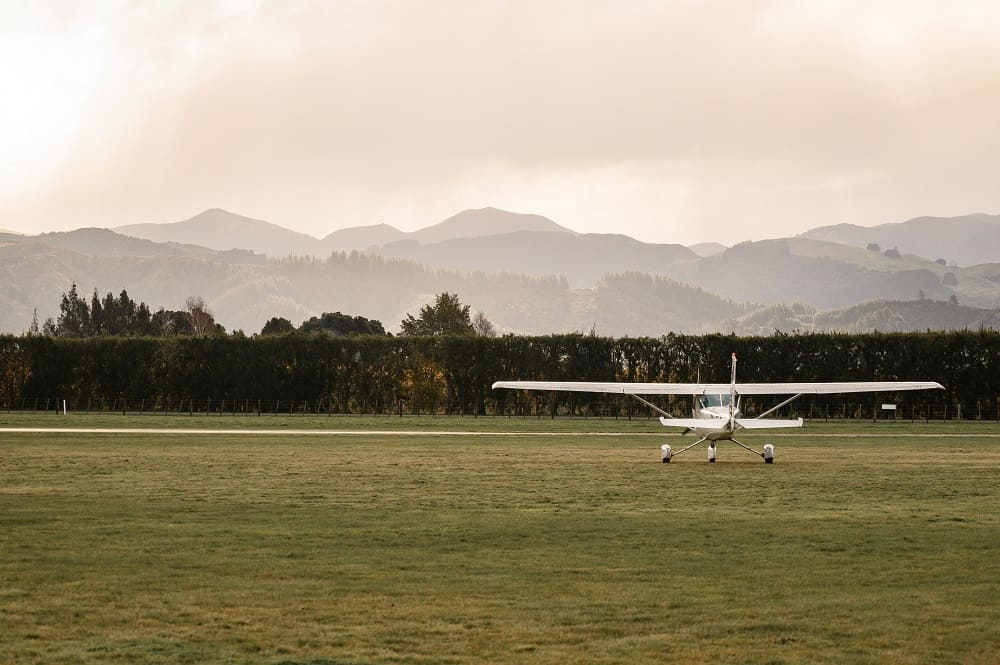One of the primary concerns of people that are new to aviation is safety. New or potential student pilots are often concerned about how dangerous it is to learn to fly. There are many factors that influence the safety of any activity, including learning to fly. So:
How Dangerous Is Learning To Fly?
The fact is, the answer is somewhat subjective. Learning to fly is statistically far less dangerous than flying a private plane for other reasons. Student pilots have lower accident rates than private pilots at large, likely due to the fact that they are heavily supervised by experienced flight instructors.
To be fair, student pilots don’t have the lowest accident rates in general aviation. The accident rates for flights identified as “business” or “corporate/executive” are lower. However, these flights are typically flown in larger aircraft by professional pilots, so it’s not really a fair comparison.
Compared to flights identified as “personal” in nature and general aviation flights as a whole, student pilots have a significantly safer record. In fact, for the years of 2012-2016, student pilots had an accident rate that was 53.2% below that of general aviation as a whole. See the table below.

There are a number of reasons for this.
Why Are Student Pilots Safer?
First, student pilots are supervised very closely by experienced flight instructors. The CFI is responsible for the safety of the student pilot. For this reason and more, the instructor keeps a watchful eye in order to make sure that the student is operating the aircraft properly (and safely).
Secondly, student pilots must pass a written exam and demonstrate proficiency in the aircraft before their instructor allows them to fly solo. The instructor is not going to allow the student to engage in any activity until he/she is ready. Even then, every flight is briefed and planned in advance. This includes preparing for and planning what the pilot will do in the event of an emergency.
Third, most student pilots have not yet developed the comfort level for them to become complacent. Unfortunately, many accidents are caused, at least in part, by a pilot being less attentive than he/she should be to critical safety precautions.
How Safe Is Flying A Small Plane?
Statistics are like opinions. Everyone has one. For this reason, I won’t put too much emphasis on any one set of numbers.
We’ve all heard the statistics about flying commercially. They say that the most dangerous part of a commercial flight is the drive to the airport. Statistically, that’s true, however, we’re not talking about commercial aviation here. We’re talking about general aviation.
According to the National Transportation Safety Board (NTSB), 95% of all aviation accidents involve general aviation. In other words, these are private pilots in private aircraft, not commercial flights. In addition, the NTSB also tells us that 70% of aviation accidents are due to pilot error.
Read also: Top 19 Aviation Safety Tips For Pilots
So, Is Flying A Plane Dangerous?
Depending on who you listen to, the answer varies. People that are unfamiliar with aviation will cite statistics showing that the fatality rate in aircraft accidents is 18 times higher than that of automobile accidents. Those in the pilot community will cite the oft-repeated “driving to the airport is more dangerous than the flight”.
The honest truth is, both are correct.
In the United States, over 30,000 people are killed every year in automobile accidents. This is compared to just a few hundred in plane crashes. However, that’s not a fair comparison when you consider how many people travel in each.
In general, the accident rate of small planes is lower than automobiles. If you estimate the distance traveled by aircraft flight hours, you would find that there are roughly 1/4 to 1/6 the number of aviation accidents than there are vehicle accidents.
On the other hand, the chances of a plane crash resulting in fatalities are much higher than for auto accidents. However, statistically speaking, your chances of being in a plane crash are pretty slim.
In fact, if you use the most recent accident rates for student pilots, only one accident occurs for about every 25,000 hours of flying. It only takes about 60 hours to get your Private Pilot Certificate. That should put it into perspective.
Read also: How Long Does It Take To Learn To Fly A Plane?
The NTSB also tells us that 70% of all accidents are caused by pilot error. Ultimately, the safety of flying a small plane comes down to the pilot. Flying a small plane is only as dangerous as the person behind the controls.
Reasons For Aircraft Safety
There are many reasons why flying a small plane is as safe as it is.
Pilot Training
First, pilots are trained to a much higher degree than drivers. There is much more to learn to become a pilot than there is to drive a car. The “rules of the road” are much more complex and so is the aircraft. As such, it takes much more effort and skill to fly an aircraft.
More Regulated / Higher Standards
Aircraft operate in a much more regulated environment. Aircraft are maintained to a much higher standard than cars and have redundant systems to drastically reduce the chances of mechanical failure.
Big Sky
The sky is big and aircraft are small (relatively speaking, of course). When flying, aircraft are far more spread out than cars are. Aircraft are also spead out in two planes, both horizontally and vertically.
While there are certainly “highways in the sky”, airplanes don’t operate in anywhere near the same type of proximity as cars do, which dramatically reduces the potential of collision.
Inherent Risks Of Flying
Of course, no matter how safe flying is, it would be silly to ignore the fact that there are inherent risks.
Weather
Aircraft are more affected by weather than automobiles are. Low visibility isn’t a problem in an airplane if the pilot and aircraft are both certified for instrument flight. However, severe winds and thunderstorms can ground even the most capable aircraft.
Mechanical/Maintenance Issues
Mechanical and maintenance issues can be more of a problem when flying. It’s very common for pilots to make emergency landings when they have a problem with the airplane.
However, they’re not always within a reasonable distance of a suitable airport. If the plane experiences engine failure, the pilot may have to land on a road or in a field. This increases the potential danger of an accident.
Read Also: Overcome Obstacles to Learning During Flight Instruction
Fuel management
Fuel management is also much more critical than in a car. If you run out of gas on the interstate, you can simply coast off to the side and call AAA.
It’s not that easy in a plane.
Running out of fuel means making an emergency landing somewhere that’s probably less than ideal. In addition, with no fuel to power the engine, you only get one chance at it. There is no going around.
Conclusion
So, how dangerous is learning to fly? Or, flying a plane in general? It’s only as dangerous as the pilot.
Part of learning to fly is using checklists and understanding the flight conditions in order to minimize any danger. In addition, pilots are taught to recognize circumstances that may prevent them from completing their flight and plan accordingly.
So, forget the statistics. The most dangerous part of learning to fly is the drive to the airport.
Recent Posts
Squawk 7700: What Aviation's Emergency Code Means for Pilots
Learn what Squawk 7700 means in aviation, how pilots use this emergency transponder code, and how air traffic control responds to aircraft emergencies worldwide.
Pitot Static System Failures: Causes, Symptoms, and Prevention
Learn about pitot static system failures, how to identify them, and crucial tips for pilots to ensure safety during critical situations.


